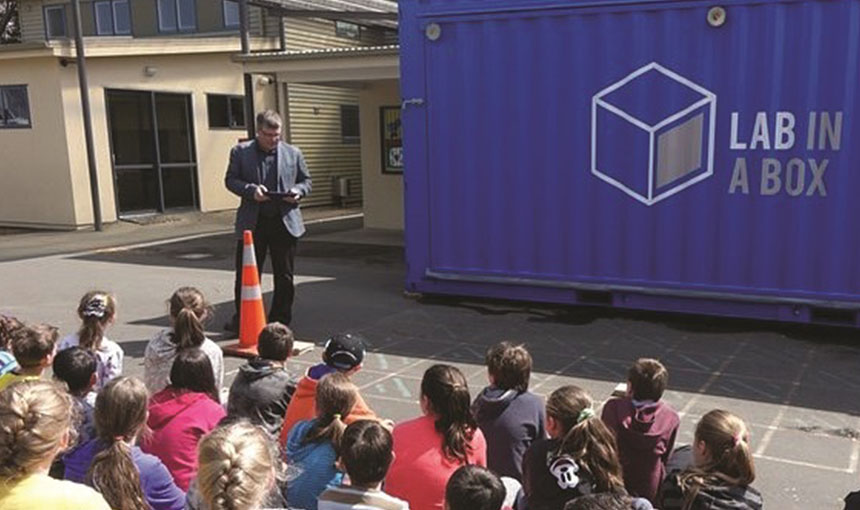Te Kura o te Kauri gets the green light
BioHeritage project leader Dr Monica Gerth is excited and completely overwhelmed to start work on Te Kura o te Kauri – The School of the Kauri.

The project will repurpose a Lab-In-A-Box – a mobile science laboratory – and visit the tamariki (children) of Northland and North Auckland at schools, museums and marae. Their aim is to inspire the ākonga (students) to become the next generation of kaitiaki o ngahere (guardians of the forest) using a multi-disciplinary approach that includes science, mātauranga Māori and the arts.
Monica, Victoria University of Wellington, is one of four science leads on the project – all of whom are trailblazers in the field of kauri dieback research: Dr Amanda Black, Bio-Protection Research Centre; Associate Professor Cate Macinnis-Ng, Auckland University; and Associate Professor Wayne Patrick, Victoria University.
The project also includes four local engagement leaders: Chris Pairama, Tekaurinui Parata, Waitangi Wood and Taoho Patuawa; and two arts leaders: Ariane Craig-Smith and Kelly Kahukiwa.
Together they will create a novel learning environment by giving tamariki hands-on experience with both mātauranga Māori and molecular approaches to the science of a healthy forest, while engaging their senses through art, sound and virtual reality (VR) technology.
Monica is particularly excited about the use of VR to convey the sense of scale around microbes and disease. For example, Tāne Mahuta is around 50 metres tall, whereas the kauri dieback microbe is only about 5 micrometers (0.000005 meters) in diameter.
VR will enable the ākonga to “zoom in” from the canopy of mighty kauri to the tiny spores that are threatening to infect it.
The microbiologist says they want to promote the concept of ‘kauri ora, Mauri ora’ (healthy kauri, healthy people) – something Western scientists have become more aware of through engagement with northern iwi in the fight to save kauri.
“Healthy kauri mean a healthy forest, and a healthy forest contributes to the wellbeing of the people,” Monica says.
The project, funded by Curious Minds, began last month. The coming months will be spent developing content and recruiting local helpers, before school visits start in spring 2019.
Both Monica and Amanda are part of BioHeritage research teams and this new project aligns well with the Challenge’s goals for public engagement, education and recognition of Māori as kaitiaki and conservation leaders.